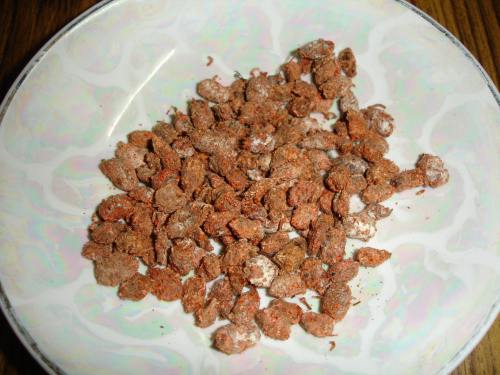|
Harvest Mite
Trombiculidae (); commonly referred to in North America as chiggers and in Britain as harvest mites, but also known as berry bugs, bush-mites, red bugs or scrub-itch mites, are a family of mites. Chiggers are often confused with jiggers – a type of flea. Several species of Trombiculidae in their larva stage bite their animal or human host and by embedding their mouthparts into the skin cause "intense irritation" or "a wheal, usually with severe itching and dermatitis". Trombiculidae live in forests and grasslands and are also found in the vegetation of low, damp areas such as woodlands, berry bushes, orchards, along lakes and streams, and even in drier places where vegetation is low, such as lawns, golf courses, and parks. They are most numerous in early summer when grass, weeds, and other vegetation are heaviest. In their larval stage, they attach to various animals, including humans, and feed on skin, often causing itching. These relatives of ticks are nearly microscopic, m ... [...More Info...] [...Related Items...] OR: [Wikipedia] [Google] [Baidu] |
Trombidiidae
Trombidiidae, also known as red velvet mites, true velvet mites, or rain bugs, are small arachnids (eight-legged arthropods) found in plant litter and are known for their bright red color. While adults are typically in length, some, such as the genus ''Dinothrombium'', may reach up to . Their life pattern is in stages similar to other members of the Prostigmata: egg, pre-larva, larva, protonymph, deutonymph, tritonymph and adult (male or female). They usually have only one breeding cycle per year.Zhang, Zhi-Qiang (1998) Biology and ecology of trombidiid mites (Acari: Trombidioidea) Experimental & Applied Acarology 22:139–15PDF/ref> They are active predators as grown adults. As early instars they are often parasites of insects and other arachnids. One well known species from Europe, Asia, and North Africa is ''Trombidium holosericeum''. The systematics of this group has been in flux and many former subfamilies of this are now raised to families within the Trombidioidea. L ... [...More Info...] [...Related Items...] OR: [Wikipedia] [Google] [Baidu] |
Neotrombicula
''Neotrombicula'' is a genus of mites in the family Trombiculidae Trombiculidae (); commonly referred to in North America as chiggers and in Britain as harvest mites, but also known as berry bugs, bush-mites, red bugs or scrub-itch mites, are a family of mites. Chiggers are often confused with jiggers – a t .... Species of this genus are found throughout Europe and North America. Species ''BioLib'' includes: # '' Neotrombicula absoluta'' Schluger, 1966 # '' Neotrombicula acomys'' (Radford, 1957) # '' Neotrombicula aeretes'' Hsu & Yang, 1985 # '' Neotrombicula agriotricha'' Stekolnikov, 1994 # '' Neotrombicula alexandrae'' Stekolnikov, 1993 # '' Neotrombicula anthiana'' Kolebinova, 1969 # '' Neotrombicula arcuata'' Wen & Jiang, 1984 # '' Neotrombicula austriaca'' Kepka, 1964 # '' Neotrombicula autumnalis'' (Shaw, 1790) # '' Neotrombicula balcanica'' Kolebinova, 1973 # '' Neotrombicula baschkirica'' Kudryashova, 1998 # '' Neotrombicula bisignata'' (Ewing, 1929) # '' Neotrombi ... [...More Info...] [...Related Items...] OR: [Wikipedia] [Google] [Baidu] |
Leptotrombidium
''Leptotrombidium'' () is a genus of mites in the family Trombiculidae, that are able to infect humans with scrub typhus (''Orientia tsutsugamushi'' infection) through their bite. The larval form (called chiggers) feeds on rodents, but also occasionally humans and other large mammals. They are related to the harvest mites of the North America and Europe. Originally, rodents were thought to be the main reservoir for ''O. tsutsugamushi'' and the mites were merely vectors of infection: that is, the mites only transferred the contagion from the rodents to humans. However, the mites are now known to only feed once in their lifetimes, which means that transmission from rodent to human via the mites is impossible (for it to have been possible, the mite would have to feed at least twice, once on the infected rodent and again on the human who would then be infected). Instead, the bacterium persists in the mites through transovarial transmission Transovarial or transovarian trans ... [...More Info...] [...Related Items...] OR: [Wikipedia] [Google] [Baidu] |
